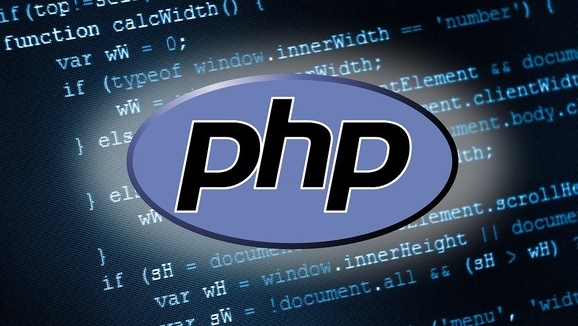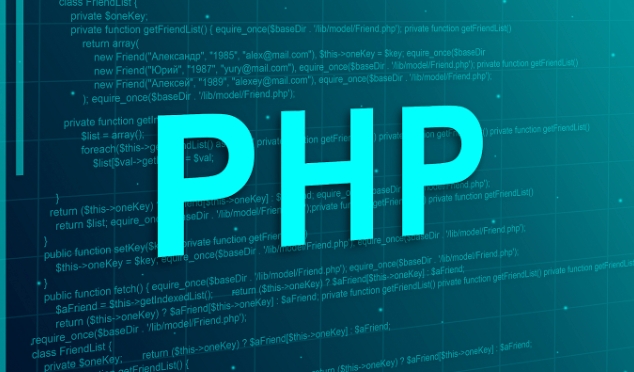The steps to install the Laravel PHP framework are as follows: 1. Make sure that the system has PHP >= 8.0, Composer and related extensions installed, and can be verified through php -v and composer --version; 2. Use the Composer command composer create-project laravel/laravel your-project-name to create a project. Windows users may require administrator permissions, and domestic users can configure mirror acceleration; 3. Set storage and bootstrap/cache directory permissions, generate .env files and configure database information; 4. Run php artisan serve to start the development server, visit http://127.0.0.1:8000 to verify whether the installation is successful. Follow the above steps and there will generally be no problems.

Installing the Laravel PHP framework is actually not complicated. As long as you know how to use Composer, you can basically do it in a few minutes. Laravel is one of the most popular PHP frameworks at present, providing elegant syntax and rich features for rapid development. Below I will explain how to install it in a few steps and what to pay attention to.

1. Ensure that the system environment meets the requirements
Before you start, you need to confirm that the following components are installed on the local or server environment:

- PHP >= 8.0 (It is recommended to use the latest stable version)
- Composer (PHP's dependency management tool)
- OpenSSL, PDO, Mbstring, Tokenizer, XML, Ctype, JSON, BCMath and other extensions
You can run php -v and composer --version from the command line to see if PHP and Composer are installed.
If Composer is not installed yet, you can download the installer on the official website or use the following command to install the global version:

curl -sS https://getcomposer.org/installer | php mv composer.phar /usr/local/bin/composer
2. Create a Laravel project using Composer
The most recommended way to install Laravel is to use Composer's create-project command. Open the terminal, go to the directory where you want to create the project, and run:
composer create-project laravel/laravel your-project-name
Here your-project-name can be replaced with your own project name, such as myblog or laravel-app .
After this step, Composer will automatically download and install Laravel's core files and all its dependencies.
Note: If you are using a Windows system, administrator permissions may be required to execute smoothly. In addition, if domestic users feel that the download is slow, they can set up a Composer image first:
composer config -g repo.packagist composer https://packagist.phpcomposer.com
3. Set permissions and configuration files (optional but important)
After the installation is complete, some details need to be dealt with:
Storage directory permissions : Make sure
storageandbootstrap/cachedirectories have write permissions, otherwise an error will occur.chmod -R 775 storage bootstrap/cache
Generate application key : Laravel requires the key in the
.envfile to encrypt the data. If there is no.envfile, you can copy.env.exampleand rename it to.envand run:php artisan key:generate
Database configuration : Open the
.envfile, find the configuration item starting withDB_*, and fill in your database information, such as user name, password, database name, etc.
4. Run the test server to verify that the installation is successful
Laravel comes with a lightweight development server, which is very suitable for testing whether the installation is successful.
After entering the project directory, run:
php artisan serve
By default, the service will run on http://127.0.0.1:8000 . Open the browser to access this address and see Laravel's welcome page, it means that the installation has been successful!
Basically these are the operations. The whole process is not complicated, but there are several small things that are easy to ignore, such as permission issues and .env configuration. As long as you do as you say step by step, you will generally not make any mistakes.
The above is the detailed content of how to install laravel php framework using composer. For more information, please follow other related articles on the PHP Chinese website!

Hot AI Tools

Undress AI Tool
Undress images for free

Undresser.AI Undress
AI-powered app for creating realistic nude photos

AI Clothes Remover
Online AI tool for removing clothes from photos.

Clothoff.io
AI clothes remover

Video Face Swap
Swap faces in any video effortlessly with our completely free AI face swap tool!

Hot Article

Hot Tools

Notepad++7.3.1
Easy-to-use and free code editor

SublimeText3 Chinese version
Chinese version, very easy to use

Zend Studio 13.0.1
Powerful PHP integrated development environment

Dreamweaver CS6
Visual web development tools

SublimeText3 Mac version
God-level code editing software (SublimeText3)
 PHP Variable Scope Explained
Jul 17, 2025 am 04:16 AM
PHP Variable Scope Explained
Jul 17, 2025 am 04:16 AM
Common problems and solutions for PHP variable scope include: 1. The global variable cannot be accessed within the function, and it needs to be passed in using the global keyword or parameter; 2. The static variable is declared with static, and it is only initialized once and the value is maintained between multiple calls; 3. Hyperglobal variables such as $_GET and $_POST can be used directly in any scope, but you need to pay attention to safe filtering; 4. Anonymous functions need to introduce parent scope variables through the use keyword, and when modifying external variables, you need to pass a reference. Mastering these rules can help avoid errors and improve code stability.
 How to handle File Uploads securely in PHP?
Jul 08, 2025 am 02:37 AM
How to handle File Uploads securely in PHP?
Jul 08, 2025 am 02:37 AM
To safely handle PHP file uploads, you need to verify the source and type, control the file name and path, set server restrictions, and process media files twice. 1. Verify the upload source to prevent CSRF through token and detect the real MIME type through finfo_file using whitelist control; 2. Rename the file to a random string and determine the extension to store it in a non-Web directory according to the detection type; 3. PHP configuration limits the upload size and temporary directory Nginx/Apache prohibits access to the upload directory; 4. The GD library resaves the pictures to clear potential malicious data.
 Commenting Out Code in PHP
Jul 18, 2025 am 04:57 AM
Commenting Out Code in PHP
Jul 18, 2025 am 04:57 AM
There are three common methods for PHP comment code: 1. Use // or # to block one line of code, and it is recommended to use //; 2. Use /.../ to wrap code blocks with multiple lines, which cannot be nested but can be crossed; 3. Combination skills comments such as using /if(){}/ to control logic blocks, or to improve efficiency with editor shortcut keys, you should pay attention to closing symbols and avoid nesting when using them.
 How Do Generators Work in PHP?
Jul 11, 2025 am 03:12 AM
How Do Generators Work in PHP?
Jul 11, 2025 am 03:12 AM
AgeneratorinPHPisamemory-efficientwaytoiterateoverlargedatasetsbyyieldingvaluesoneatatimeinsteadofreturningthemallatonce.1.Generatorsusetheyieldkeywordtoproducevaluesondemand,reducingmemoryusage.2.Theyareusefulforhandlingbigloops,readinglargefiles,or
 Tips for Writing PHP Comments
Jul 18, 2025 am 04:51 AM
Tips for Writing PHP Comments
Jul 18, 2025 am 04:51 AM
The key to writing PHP comments is to clarify the purpose and specifications. Comments should explain "why" rather than "what was done", avoiding redundancy or too simplicity. 1. Use a unified format, such as docblock (/*/) for class and method descriptions to improve readability and tool compatibility; 2. Emphasize the reasons behind the logic, such as why JS jumps need to be output manually; 3. Add an overview description before complex code, describe the process in steps, and help understand the overall idea; 4. Use TODO and FIXME rationally to mark to-do items and problems to facilitate subsequent tracking and collaboration. Good annotations can reduce communication costs and improve code maintenance efficiency.
 Quick PHP Installation Tutorial
Jul 18, 2025 am 04:52 AM
Quick PHP Installation Tutorial
Jul 18, 2025 am 04:52 AM
ToinstallPHPquickly,useXAMPPonWindowsorHomebrewonmacOS.1.OnWindows,downloadandinstallXAMPP,selectcomponents,startApache,andplacefilesinhtdocs.2.Alternatively,manuallyinstallPHPfromphp.netandsetupaserverlikeApache.3.OnmacOS,installHomebrew,thenrun'bre
 How to access a character in a string by index in PHP
Jul 12, 2025 am 03:15 AM
How to access a character in a string by index in PHP
Jul 12, 2025 am 03:15 AM
In PHP, you can use square brackets or curly braces to obtain string specific index characters, but square brackets are recommended; the index starts from 0, and the access outside the range returns a null value and cannot be assigned a value; mb_substr is required to handle multi-byte characters. For example: $str="hello";echo$str[0]; output h; and Chinese characters such as mb_substr($str,1,1) need to obtain the correct result; in actual applications, the length of the string should be checked before looping, dynamic strings need to be verified for validity, and multilingual projects recommend using multi-byte security functions uniformly.
 Learning PHP: A Beginner's Guide
Jul 18, 2025 am 04:54 AM
Learning PHP: A Beginner's Guide
Jul 18, 2025 am 04:54 AM
TolearnPHPeffectively,startbysettingupalocalserverenvironmentusingtoolslikeXAMPPandacodeeditorlikeVSCode.1)InstallXAMPPforApache,MySQL,andPHP.2)Useacodeeditorforsyntaxsupport.3)TestyoursetupwithasimplePHPfile.Next,learnPHPbasicsincludingvariables,ech






